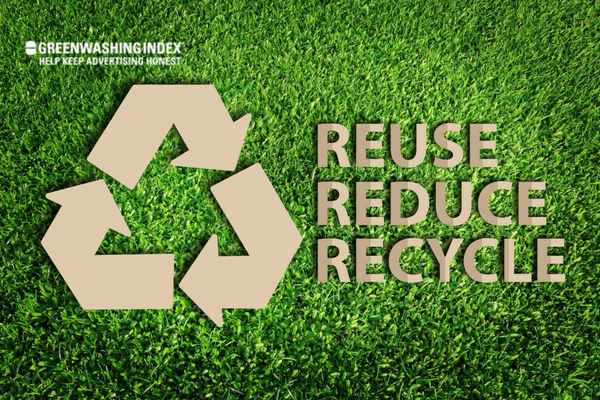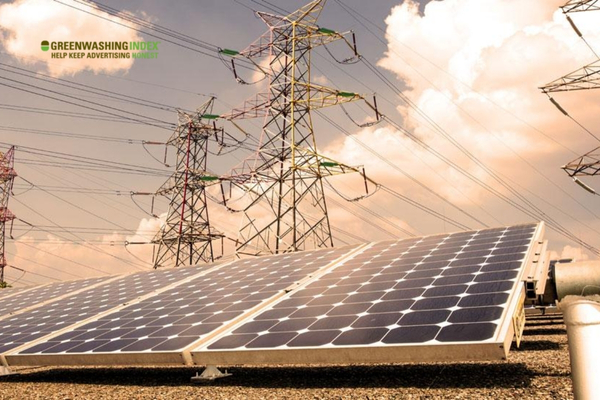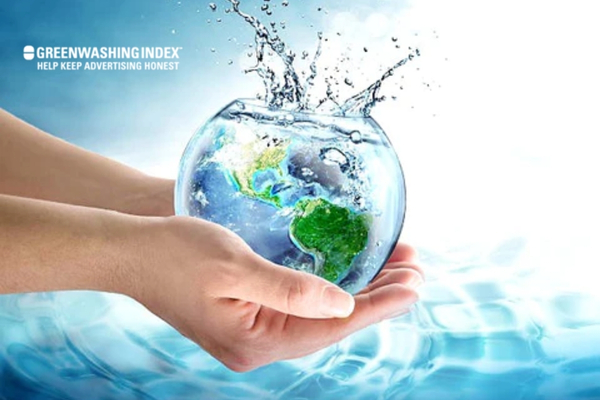

Embracing a greener lifestyle is more attainable than many realize. With a few mindful adjustments, anyone can significantly reduce their environmental impact. Carrying a reusable water bottle instead of opting for single-use plastics or choosing energy-efficient appliances that save both money and the planet.
These small yet impactful changes mark the beginning of a journey toward sustainability, where every effort counts in the fight against climate change. By making conscious choices daily, we can collectively pave the way for a healthier Earth.
Adopting eco-friendly practices at home is essential for reducing your carbon footprint and promoting sustainability. By making small changes, you can contribute to a healthier environment while also saving on energy costs. Here are some practical tips to help you go green at home:

By implementing these strategies, you can create a more sustainable home while contributing positively to the environment.
Also Read: Old Electronics Disposal: Ultimate Recycling Tips Guide
Becoming environmentally friendly is essential in today’s world, where waste management and resource conservation are critical for sustaining our planet. The concept of Reduce, Reuse, Recycle serves as a foundational approach to minimizing waste and promoting sustainable practices.

By understanding and implementing these three principles, individuals can significantly reduce their environmental footprint, conserve natural resources, and contribute to a healthier ecosystem. Below is an overview of each principle and its importance.
Reduce: This principle emphasizes minimizing the amount of waste generated. By cutting back on consumption and being mindful of purchases, individuals can prevent unnecessary waste. For example, opting for bulk purchases can reduce packaging waste, and applying the “three-day rule” before making non-essential purchases can help curb impulse buying.
Reuse: Reusing involves finding new purposes for items that might otherwise be discarded. This can include repurposing old clothing as cleaning rags or using glass jars for storage. By extending the life of products, we reduce the demand for new items and decrease overall waste. Donating usable goods also supports community needs while preventing items from ending up in landfills.
Recycle: Recycling transforms waste materials into new products, conserving raw materials and energy. Commonly recycled items include paper, plastic, glass, and metal. Participating in local recycling programs ensures that materials are processed correctly and repurposed effectively. Additionally, purchasing products made from recycled materials supports this cycle and encourages sustainable manufacturing practices.
By actively engaging in these three principles—reducing consumption, reusing items creatively, and recycling materials—we can all contribute to a more sustainable future.
Also Read: Glass Recycling Uncovered: Endless Lifespan Explained!
Energy efficiency is a critical concept in today’s world, emphasizing the need to utilize energy resources wisely and sustainably. By optimizing energy use, we can achieve significant benefits that not only enhance our quality of life but also contribute to environmental preservation.
This approach is essential for reducing costs, minimizing greenhouse gas emissions, and fostering a sustainable future. Below are key aspects of energy efficiency, its benefits, and its importance in powering our lives sustainably.

Energy efficiency refers to the ability to perform tasks or produce goods using less energy than traditional methods. It involves optimizing energy use to achieve maximum performance with minimal consumption, thereby reducing waste and environmental impact.
This principle applies across various sectors, including residential, commercial, and industrial contexts, promoting smarter energy management practices that are crucial for sustainability.
Energy and Cost Savings: One of the most immediate benefits of energy efficiency is the reduction in energy bills. By consuming less energy for the same activities—such as heating, cooling, and running appliances—households and businesses can significantly lower their utility expenses. For example, switching to LED lighting can reduce energy consumption by up to 80% compared to traditional bulbs.
Environmental Benefits: Improving energy efficiency plays a vital role in combating climate change. By decreasing energy consumption, we reduce greenhouse gas emissions associated with fossil fuel use. This not only helps mitigate global warming but also lowers air pollution levels, contributing to cleaner air and improved public health.
Improvements in Supply: Energy efficiency optimizes the use of natural resources, which can enhance local economies by promoting responsible consumption. Efficient systems reduce the overall demand for electricity on the grid, minimizing congestion and stress on infrastructure while ensuring more reliable energy supply.
Health Benefits: Enhanced energy efficiency leads to better indoor air quality and thermal comfort in buildings. This can reduce health risks related to poor ventilation and temperature extremes, particularly benefiting vulnerable populations who may be disproportionately affected by energy poverty.
Community Resilience: Energy-efficient technologies can improve community resilience by addressing energy equity issues. Programs aimed at enhancing efficiency often target underserved communities, helping them reduce their energy burden while fostering economic growth through job creation in the energy sector.
Embracing energy efficiency is not just about saving money; it is a fundamental strategy for achieving sustainability and resilience in our communities while protecting the environment for future generations.
Also Read: Water Conservation Tips for Home: 40+ Savvy Strategies
Water is an essential resource for life, yet its scarcity is becoming increasingly evident due to climate change, population growth, and unsustainable practices. Conserving water is crucial not only for the environment but also for ensuring that future generations have access to this vital resource.

By adopting various strategies and technologies, individuals and communities can significantly reduce water usage. This document outlines key methods and practices for effective water conservation.
1. Drip Irrigation: Drip irrigation is a highly efficient method that delivers water directly to the roots of plants, minimizing evaporation and runoff. This technique allows farmers to achieve higher crop yields while using less water compared to traditional irrigation methods.
2. Rainwater Harvesting: Collecting rainwater through systems such as gutters and storage tanks is an effective way to utilize natural precipitation. This harvested water can be used for irrigation, flushing toilets, and other non-potable applications.
3. Greywater Recycling: Greywater recycling involves reusing water from sinks, showers, and washing machines for irrigation or toilet flushing. This practice reduces the demand on freshwater sources and promotes sustainable water use in households.
4. Water-Efficient Appliances: Investing in water-efficient appliances like low-flow showerheads, dual-flush toilets, and high-efficiency washing machines can significantly reduce household water consumption. These devices are designed to use less water without sacrificing performance.
5. Smart Irrigation Controllers: These devices adjust watering schedules based on weather conditions, soil moisture levels, and plant needs. By optimizing irrigation practices, smart controllers help prevent over-watering and conserve water in landscaping.
6. Conservation Tillage: This agricultural practice reduces soil disturbance and maintains soil moisture by leaving crop residues on the field. It enhances water retention in the soil, which is vital during dry periods.
7. Drought-Resistant Plants: Choosing native or drought-resistant plants for landscaping can significantly reduce the amount of water needed for irrigation. These plants are adapted to local climates and require less maintenance.
8. Community Awareness Programs: Educating communities about the importance of water conservation can foster a culture of sustainability. Initiatives may include workshops, informational campaigns, and partnerships with local organizations to promote water-saving practices.
By implementing these strategies, individuals can contribute to the conservation of one of our planet’s most precious resources—water—ensuring its availability for generations to come.
Also Read: Environmentally-Friendly Camping: Your Ultimate Green Guide
Green transportation is an essential aspect of the global effort to combat climate change and promote sustainability. As urban populations grow and environmental concerns escalate, transitioning to eco-friendly modes of transport becomes increasingly vital.

Green transportation encompasses various methods that minimize environmental impact, reduce greenhouse gas emissions, and promote public health. This shift not only addresses current mobility needs but also ensures a healthier planet for future generations. Below are key components and types of green transportation that contribute to a sustainable future.
Green transportation refers to modes of transport that have a minimal negative impact on the environment compared to traditional methods. This includes various forms such as electric vehicles (EVs), bicycles, public transit systems, and walking. The overarching goal is to create a sustainable transportation system that meets current needs without compromising the ability of future generations to meet theirs.
Adopting green transportation is crucial for several reasons, each contributing to a more sustainable future. The transport sector is one of the largest contributors to global greenhouse gas emissions, making it imperative to find cleaner alternatives.
Moreover, green transportation enhances public health by reducing air pollution and associated health risks. It also promotes energy security by decreasing reliance on fossil fuels and supports economic growth through job creation in green industries. These benefits highlights the importance of transitioning to eco-friendly transport solutions.
Several types of green transportation are gaining traction as viable alternatives to conventional methods. Electric vehicles (EVs) are at the forefront, offering zero exhaust emissions and greater energy efficiency. Bicycles and pedestrian transport are also critical components, promoting physical health while producing no emissions at all.
Additionally, public transport systems like electric buses and trains provide efficient means of travel that reduce overall emissions per passenger mile. Exploring these options reveals the diverse ways we can move towards a more sustainable transportation future.
The future of green transportation looks promising with technological advancements such as self-driving electric vehicles, improved battery storage solutions, and hydrogen fuel cells. These innovations aim to enhance efficiency while minimizing environmental impacts. Additionally, supportive policies and infrastructure investments from governments will be crucial in promoting the adoption of green transport options.
Also Read: Eco-Friendly Dishwashing: Save Water and Protect Earth
Mindful eating is a holistic approach that encourages individuals to engage fully with their eating experiences. By fostering a deeper connection to food, mindful eating not only enhances personal health but also promotes environmental sustainability.

This practice involves paying attention to the sensory aspects of food—its taste, texture, and aroma—while being aware of the emotions and thoughts that arise during meals. As people become more conscious of their eating habits, they can make choices that benefit both their well-being and the planet. Below are key aspects of mindful eating habits and their environmental implications.
Mindful eating offers numerous benefits that extend beyond personal health. It enhances awareness of one’s relationship with food, leading to healthier choices and improved emotional well-being. Key benefits include:
The connection between mindful eating and sustainability is becoming increasingly recognized. By making conscious food choices, individuals can significantly reduce their environmental impact. Key aspects include:
Practical Tips for Mindful Eating – Implementing mindful eating habits can be straightforward. Here are some practical tips:
By adopting mindful eating habits, individuals not only improve their own health but also contribute positively to the environment. This approach fosters a deeper appreciation for food and its origins while promoting sustainable practices that benefit the planet for future generations.
Also Read: Industrial Carbon Footprint Reduction: Proven Strategies
When it comes to living an eco-friendly lifestyle, one of the most powerful things I can do is choose where I spend my money. It’s not just about the products I use but also about which businesses get my support.
Companies that work hard to reduce their impact on the earth deserve my backing. In step six, let’s dive into why supporting green businesses matters and how to spot real environmentally friendly brands.
When I decide to buy something, I always remember that the money I spend is like my vote for what kind of world I want to live in. If I choose to buy from a business that cares about our planet, it’s like telling everyone that being environmentally friendly is important.
Here’s why it matters so much:
To make sure my support goes to the right place, here’s how I identify truly green brands:
Remembering these tips has helped me make better choices as a shopper – ones that help both the environment and promote a more sustainable way of living!
You can switch off lights when you leave a room, use reusable bags, and recycle. These simple steps help reduce your carbon footprint.
Using less water means lower water bills. Plus, eco-friendly appliances can save money in the long run due to their efficiency.
Yes, look for companies that promote green lifestyle practices, such as those making biodegradable items or using recycled materials.
Adopting eco-friendly practices at home is a transformative journey that anyone can embark on. Implementing go green tips such as reducing single-use plastics, conserving energy, and recycling can significantly lower your environmental impact. Moreover, exploring ways to go green at home, like using energy-efficient appliances and supporting local produce, contributes to a healthier planet.
These small yet impactful changes not only foster sustainability but also inspire others to follow suit, creating a collective movement towards environmental consciousness. Embracing these habits ultimately leads to a brighter future for generations to come.

Don't let aphids, slugs, and caterpillars ruin another plant. Take back control with simple, natural methods that actually work.